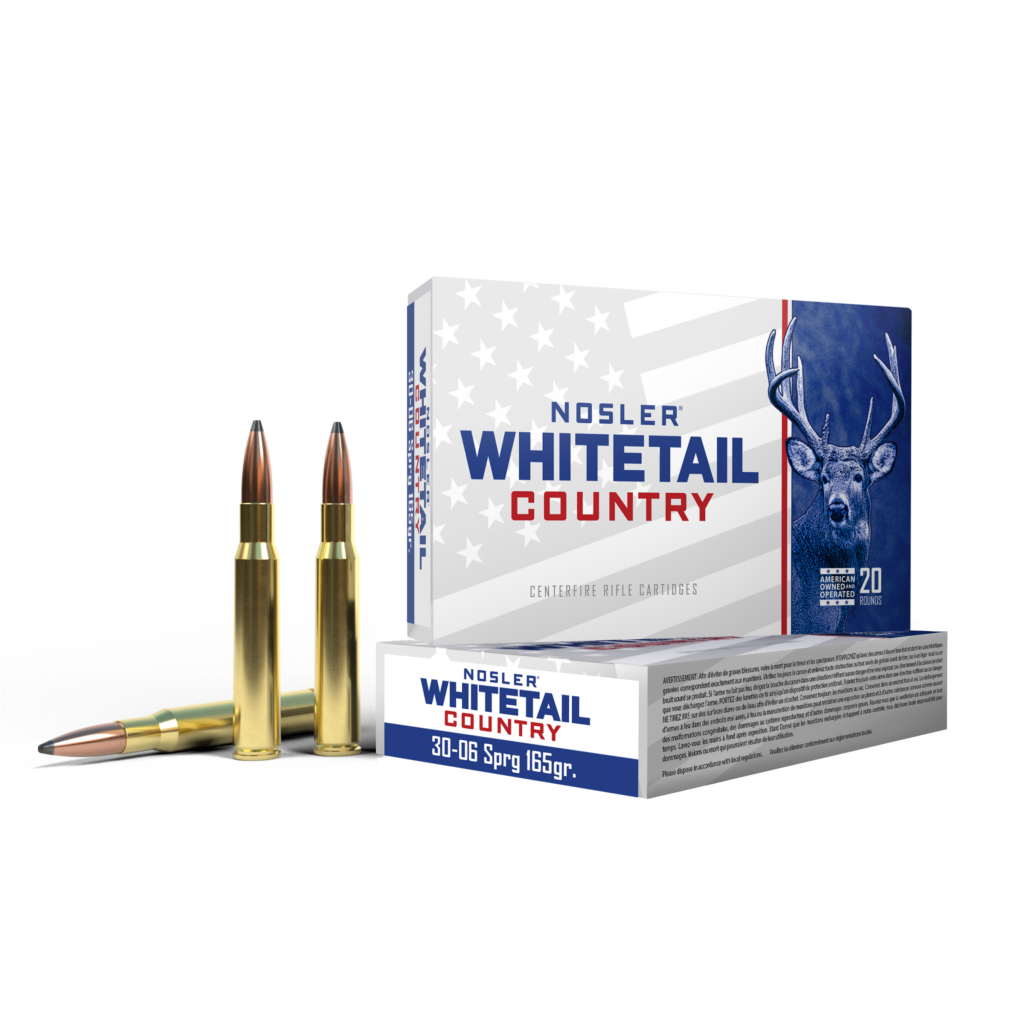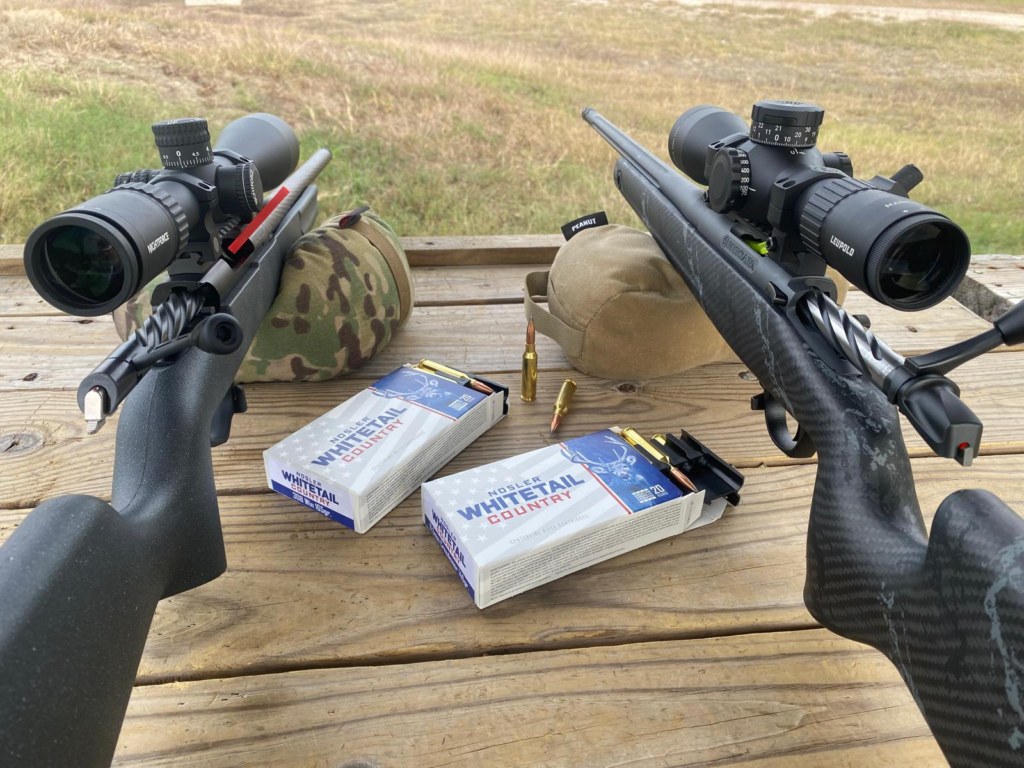(Title Image) The .308 Winchester Taurus Bolt Action Expedition Rifle and the 6.5 mm Creedmoor Bergara B14 Sqaured Crest Bolt Action rifle. These are the two guns I’m using for my ongoing evaluation of Nosler’s new Whitetail Country rifle hunting ammo line.
Deer season traditionally begins in the fall in most states in the US. This year, Oregon-based Nosler recently launched a new cartridge specifically for deer hunting: the Nosler Whitetail Country.
Nosler loads Whitetail Country for some of the most timeless North American big game cartridges, including .30-30 Winchester, .30-06 Springfield, .270 Winchester, and .308 Winchester. Beyond those classic chamberings, Whitetail Country is also available for the 7mm-08 and 6.5 mm Creedmoor cartridges. These are two newer, milder-recoiling, and well-loved deer-slaying cartridges in their own right.
Finally, Nosler didn’t snooze on straight-wall rifle cartridge deer hunters either. Both .45-70 Government and .350 Legend are included in the Whitetail Country line.
Here is the complete list with the corresponding projectile weights:
- 6.5 Creedmoor, 140-grain
- .270 Win, 130-grain
- 7mm-08 Rem, 140-grain
- .30-30 Win, 150-grain
- .308 Win, 165-grain
- .30-06 Sprg, 165-grain
- .350 Legend, 180-grain
- .45-70 Govt, 300-grain
Nosler Whitetail Country Bullets

Whitetail Country deer cartridges are loaded with Nosler brass cases and can be had with two types of premium soft-point bullets. Specifially, the Nosler Solid Base boat-tail [for bottleneck rounds] or the Nosler Straight-Wall bullet [for straight-wall cartridges].
Due to their mission of traditional deer hunting, neither Whitetail Country projectile is bonded. They don’t need to be. In researching this new ammo, I noticed that Nosler’s information is quite clear about this being a standard and affordable deer cartridge. They also suggested that hunters looking for a more technical cartridge would be better served by looking at other products, such as the Nosler Ballistic Tip or Nosler Accu-Bond bullets.
Solid Base Bullet

The Nosler Solid Base Bullet is a premium soft-point boat-tail bullet. The design includes a tapering bullet jacket with a heavy solid base that completely encloses the core.
Externally, the Solid Base bullet has a standard “tangent ogive” shape with a large bearing surface. Internally, the rearmost part of the Solid Base bullet’s jacket resembles the web of a brass cartridge case, the really thick section of brass that supports the case head.
The corresponding core also tapers in the rear. However, its shape widens towards the front of the projectile, where the jacket is also thinner. The degree of the tapering core varies by each actual caliber, with the .264” 6.5mm 140-gr projectile having the most internal core taper.
Excluding the .30-30 Winchester load, G1 ballistic coefficients for most Whitetail Country Solid Base bullets hover around the mid to high .400s.
The tip of the core of all Solid Base bullets is exposed and bells out over the front edges of the jacket to form the meplat. If you weren’t paying close attention, you’d think this bullet had a gray-colored ballistic tip and not an exposed lead soft point.
Nosler manufactures these bullets by impact extrusion. In fact, they’re the only company that sells impact-extruded projectiles for light-skinned game like deer at the time of this writing.
Straight-Wall Bullet
Slower muzzle velocities are part and parcel of rifle shooting with straight-wall cartridges. Because of that, Nosler’s Straight-Wall bullet is designed for efficiency in this context. The goal is to guarantee reliable expansion on game at slower velocities. To accomplish this, Nosler profiled this bullet and its jacket completely different from that of the Solid-Base.
Instead of a tapering jacket with a thicker base, Straight-Wall bullets have a thinner jacket and a thinner base to ensure terminal effectiveness in lower-velocity impacts. To ensure feeding and chambering reliability across different action types, Straight-Wall bullets have a truncated nose design that culminates in a wide meplat that also exposes the tip of the lead core.

Continued in Part 2 (with actual, hands-on ballistic information, which I’m still working on compiling)
Read the full article here










